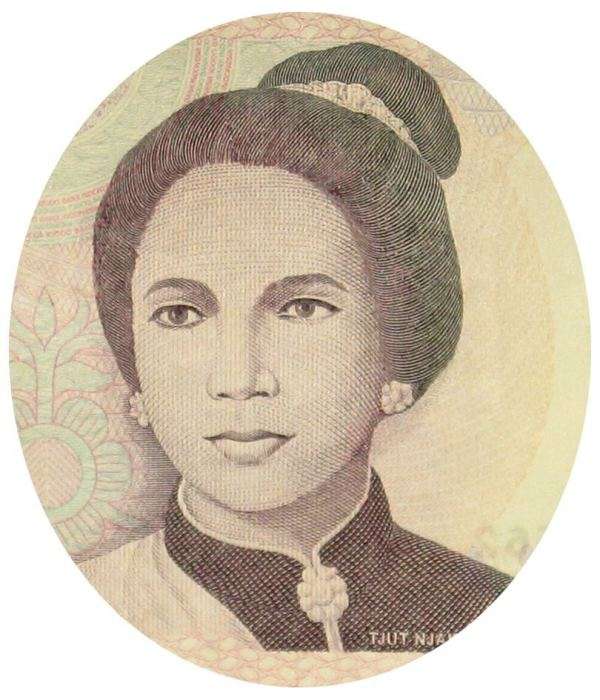Cut Nyak Dien (1848-1908) was an Indonesian national heroine and guerrilla fighter who played a significant role in the Aceh War against Dutch colonial rule in the late 19th century. She was born on May 1, 1848, in Lampadang, Aceh, on the island of Sumatra.
Cut Nyak Dien was born into a noble family and received a traditional Islamic education. She grew up in a region known for its resistance against Dutch colonialism and developed a strong sense of patriotism and defiance against foreign occupation.
In 1873, Cut Nyak Dien married Teuku Umar, a prominent Acehnese leader and freedom fighter who had been leading the resistance against Dutch rule. Her marriage to Teuku Umar further fueled her desire to fight for the independence of Aceh.
When her husband was captured and imprisoned by the Dutch in 1896, Cut Nyak Dien took over the leadership of the resistance movement. Under her command, she organized and led guerrilla attacks against Dutch forces, using her strategic brilliance and tactical knowledge to engage in hit-and-run tactics. Her forces consisted of both men and women, and she was able to inspire and motivate her followers to fight fiercely for their cause.
Cut Nyak Dien's guerrilla warfare tactics and her ability to rally the Acehnese people in the face of adversity made her a formidable opponent for the Dutch. Her resistance efforts lasted for several years, causing significant difficulties for the colonial forces.
In 1901, Cut Nyak Dien was eventually captured by the Dutch after a long and relentless pursuit. She was imprisoned and exiled to Java, where she spent the remaining years of her life. Cut Nyak Dien passed away on November 6, 1908, in Sumedang, West Java.
Cut Nyak Dien's bravery and commitment to the cause of Acehnese independence have made her a revered figure in Indonesian history. Her legacy continues to inspire generations, and she is recognized as one of Indonesia's national heroes. Her story symbolizes the spirit of resistance and the struggle for freedom against colonial oppression. Numerous monuments, museums, and institutions in Indonesia are dedicated to preserving and commemorating her memory and the Aceh resistance movement she led.
Cut Nyak Dien's bravery and commitment to the cause of Acehnese independence have made her a revered figure in Indonesian history. Her legacy continues to inspire generations, and she is recognized as one of Indonesia's national heroes. Her story symbolizes the spirit of resistance and the struggle for freedom against colonial oppression. Numerous monuments, museums, and institutions in Indonesia are dedicated to preserving and commemorating her memory and the Aceh resistance movement she led.
Cut Nyak Dien's role in the Aceh War was significant not only for her military leadership but also for her contributions to the empowerment of women. In a society where women's roles were often confined to domestic duties, Cut Nyak Dien defied societal norms and became a prominent figure in the armed resistance. By leading both men and women in battle, she challenged gender stereotypes and demonstrated the capabilities and strength of women in the fight for independence.
Cut Nyak Dien's story has been immortalized in literature, poetry, and folklore, further cementing her status as a national icon. Her heroic deeds have inspired numerous works of art, including films, plays, and novels that celebrate her courage and determination.
Today, Cut Nyak Dien's legacy serves as a reminder of Indonesia's long history of struggle against colonialism and the importance of preserving national identity and independence. She continues to be a symbol of courage, resilience, and the indomitable spirit of the Indonesian people.
In summary, Cut Nyak Dien was a fearless guerrilla fighter and a pivotal figure in the Aceh War against Dutch colonial rule. Her unwavering determination, strategic brilliance, and defiance against the colonial forces have made her a beloved national heroine in Indonesia, inspiring generations and leaving an indelible mark on the country's history.




